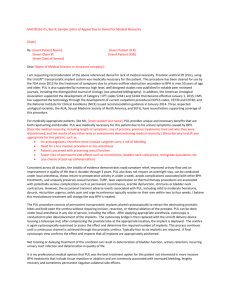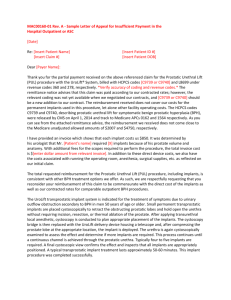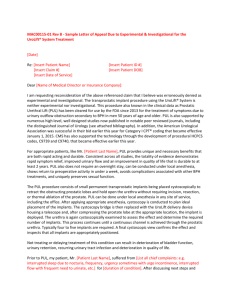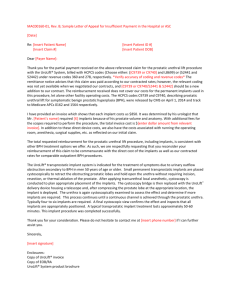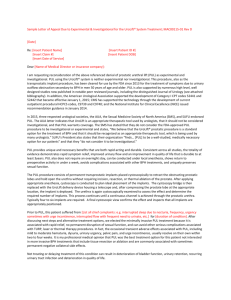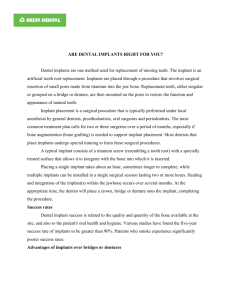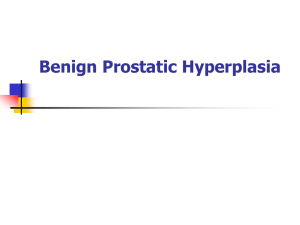Sample Letter of Medical Necessity for Prior Authorization
advertisement
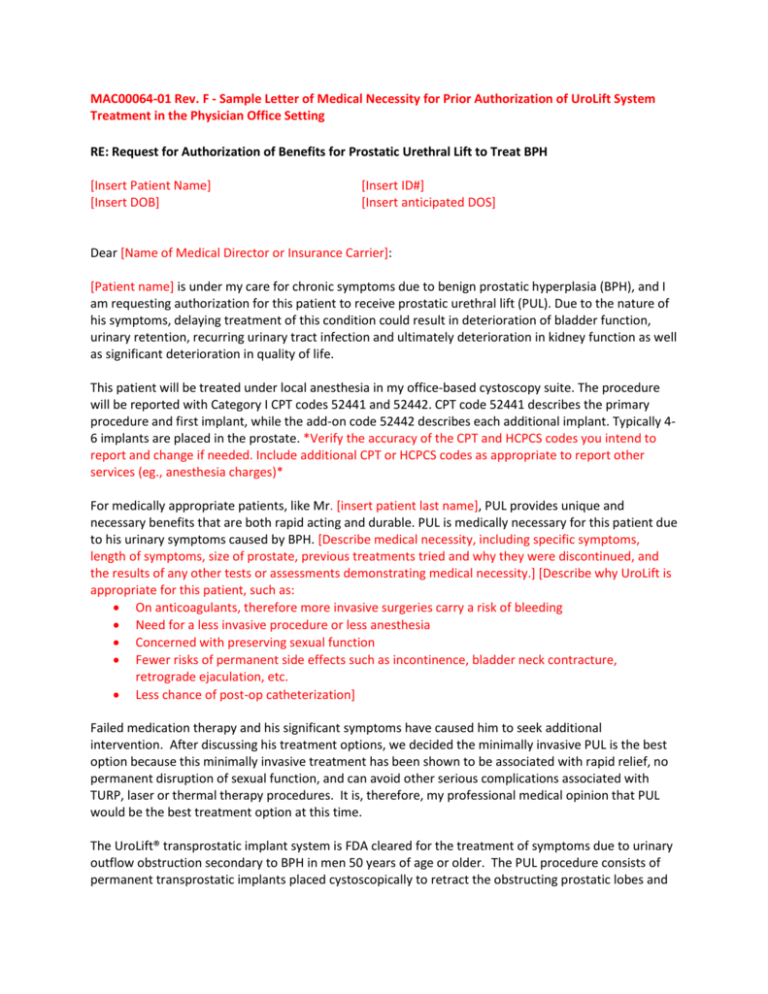
MAC00064-01 Rev. F - Sample Letter of Medical Necessity for Prior Authorization of UroLift System Treatment in the Physician Office Setting RE: Request for Authorization of Benefits for Prostatic Urethral Lift to Treat BPH [Insert Patient Name] [Insert DOB] [Insert ID#] [Insert anticipated DOS] Dear [Name of Medical Director or Insurance Carrier]: [Patient name] is under my care for chronic symptoms due to benign prostatic hyperplasia (BPH), and I am requesting authorization for this patient to receive prostatic urethral lift (PUL). Due to the nature of his symptoms, delaying treatment of this condition could result in deterioration of bladder function, urinary retention, recurring urinary tract infection and ultimately deterioration in kidney function as well as significant deterioration in quality of life. This patient will be treated under local anesthesia in my office-based cystoscopy suite. The procedure will be reported with Category I CPT codes 52441 and 52442. CPT code 52441 describes the primary procedure and first implant, while the add-on code 52442 describes each additional implant. Typically 46 implants are placed in the prostate. *Verify the accuracy of the CPT and HCPCS codes you intend to report and change if needed. Include additional CPT or HCPCS codes as appropriate to report other services (eg., anesthesia charges)* For medically appropriate patients, like Mr. [insert patient last name], PUL provides unique and necessary benefits that are both rapid acting and durable. PUL is medically necessary for this patient due to his urinary symptoms caused by BPH. [Describe medical necessity, including specific symptoms, length of symptoms, size of prostate, previous treatments tried and why they were discontinued, and the results of any other tests or assessments demonstrating medical necessity.] [Describe why UroLift is appropriate for this patient, such as: On anticoagulants, therefore more invasive surgeries carry a risk of bleeding Need for a less invasive procedure or less anesthesia Concerned with preserving sexual function Fewer risks of permanent side effects such as incontinence, bladder neck contracture, retrograde ejaculation, etc. Less chance of post-op catheterization] Failed medication therapy and his significant symptoms have caused him to seek additional intervention. After discussing his treatment options, we decided the minimally invasive PUL is the best option because this minimally invasive treatment has been shown to be associated with rapid relief, no permanent disruption of sexual function, and can avoid other serious complications associated with TURP, laser or thermal therapy procedures. It is, therefore, my professional medical opinion that PUL would be the best treatment option at this time. The UroLift® transprostatic implant system is FDA cleared for the treatment of symptoms due to urinary outflow obstruction secondary to BPH in men 50 years of age or older. The PUL procedure consists of permanent transprostatic implants placed cystoscopically to retract the obstructing prostatic lobes and hold open the urethra without requiring incision, resection, or thermal ablation of the prostate. PUL can be done under local anesthesia in any site of service, including the office. After applying appropriate anesthesia, cystoscopy is conducted to plan ideal placement of the implants. The cystoscopy bridge is then replaced with the UroLift delivery device housing a telescope and, after compressing the prostate lobe at the appropriate location, the implant is deployed. The urethra is again cystoscopically examined to assess the effect and determine the required number of implants. This process continues until a continuous channel is achieved through the prostatic urethra. Typically four to six implants are required. A final cystoscopic view confirms the effect and inspects that all implants are appropriately positioned. There is an abundance of clinical evidence supporting this procedure , including 3 year data from a large US blinded, randomized controlled trial, a cross-over study of the RCT, sexual function studies, and several international studies. Clinical experience demonstrates that treatment with PUL is effective in rapidly reducing BPH symptoms, improving flow rate, and improving a patient’s quality of life, while avoiding the serious complications that can be associated with TURP or laser vaporization, such as permanent incontinence, erectile dysfunction, strictures or bladder neck contracture. In fact, the occasional transient adverse effects associated with PUL, including mild to moderate hematuria, dysuria, urinary urgency, pelvic pain, and urge incontinence usually resolve on their own within two to four weeks. Based on available clinical information, evidenced-based expert medical opinion, and this patient’s medical diagnosis, I respectfully request that you approve PUL for this patient. If you require any additional information, please feel free to call me at [phone number]. Sincerely, [Physician’s name and identification number] Enclosures: Pertinent Medical Records UroLift Clinical Bibliography
